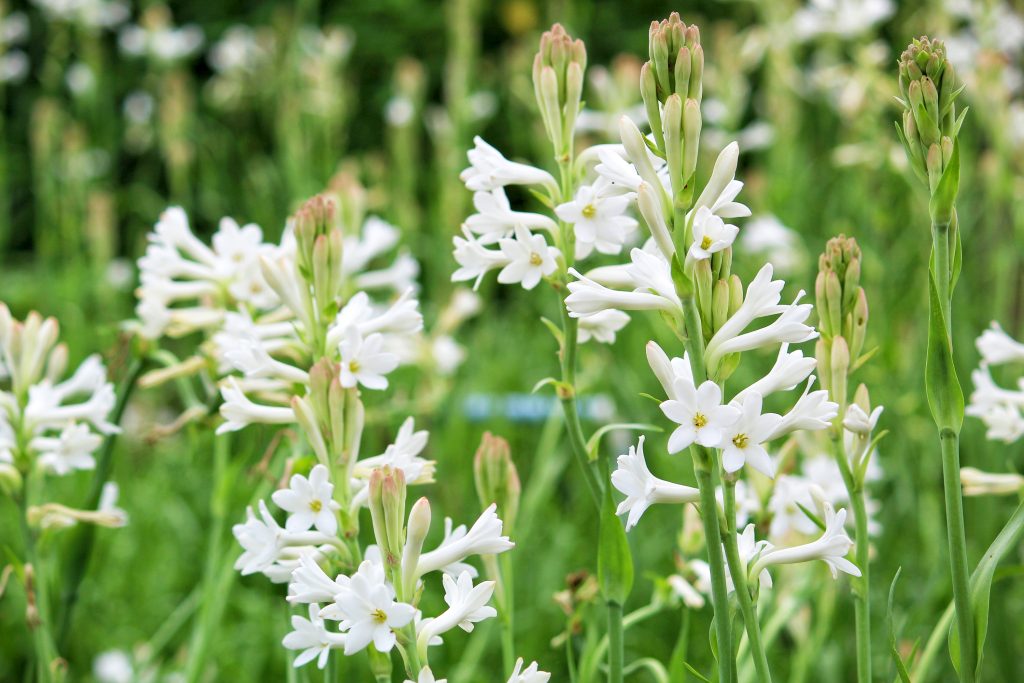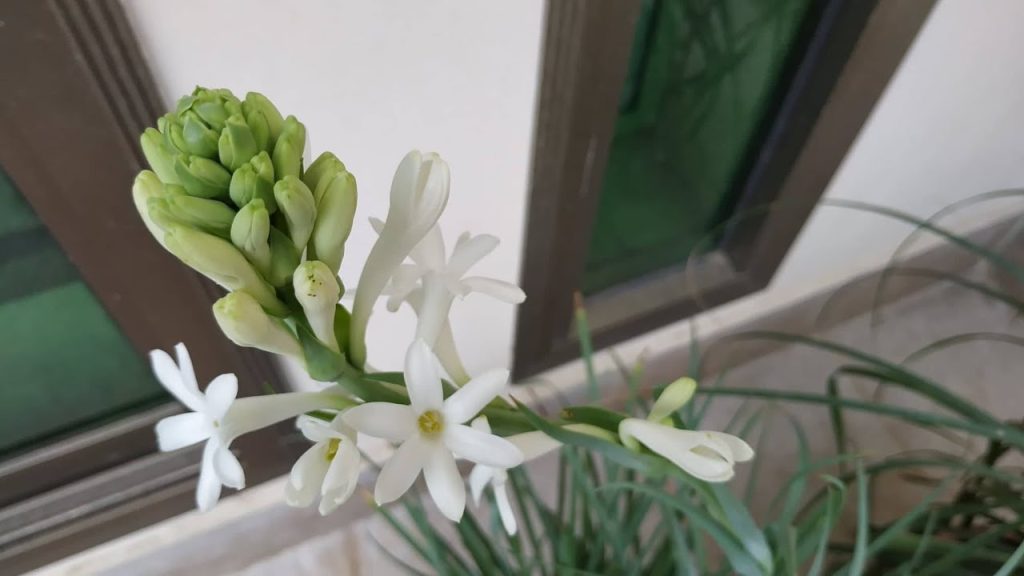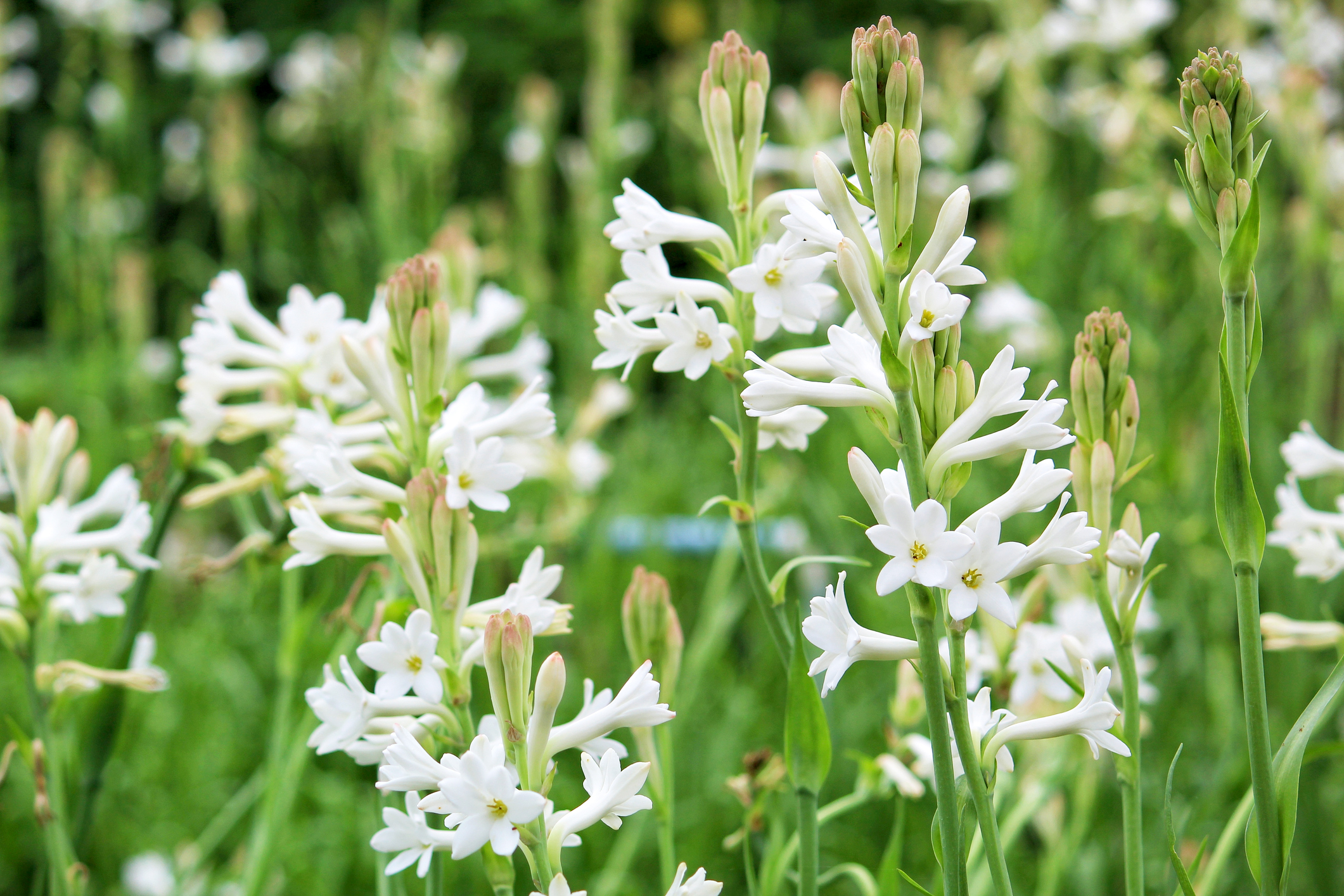Agave Amica
Formerly known as polianthes tuberosa, the remarkable agave amica is a perennial member of the asparagaceae family. While the botanical name may not hold much significance for you, it’s worth noting that this particular flowering plant is renowned for its extraordinary fragrance, making it one of the most aromatic species on Earth.
Famously called the tuberose plant, p tuberosa has been cultivated since the time of the Aztecs. Originally grown solely for its enchanting scent, it has now gained popularity as an exquisite ornamental plant.
An intriguing historical anecdote reveals that Louis XIV, who had an aversion to bathing, kept bowls of fresh tuberose, lilac, and jasmine flowers scattered throughout his abode to combat his unpleasant odor.
In the present day, people cultivate tuberose not only for its delightful fragrance but also for its low-maintenance nature and the enduring beauty of its white blossoms, which grace the summer season. Let’s delve deeper into the art of growing tuberose!
What Does a Tuberose Plant Look Like?

In the summer, the tuberose plant displays stunning white flowers in full bloom, creating a captivating sight.
Growth Pattern
Starting from resilient rhizomes beneath the soil, tuberose plants extend their roots. Rhizomes, also known as tubers, serve as underground storage units, ensuring the plant’s well-being during harsh climates and long winters.
These rhizomes produce offsets, allowing the plant to propagate both underground and through seeds on the surface.
From a rhizome, a basal rosette of leaves emerges, accompanied by a flower spike that can reach impressive heights of up to four feet. This height contributes to the plant’s charm, making it an excellent addition to any garden.
Leaves
The tuberose plant’s leaves typically form a basal rosette near the flowering stem’s base. These leaves have a subdued green hue and possess a slightly succulent texture.
Succulent leaves are plump and three-dimensional, unlike deciduous leaves. Their moisture retention capability helps the plant stay hydrated.
Flowers
The inflorescence of the tuberose plant manifests as a tall flower spike with numerous smaller flowers. Flower buds usually bloom in early summer, extending their enchanting display into late summer and fall, depending on the planting time.
Each individual tuberose flower has a tubular shape, hence its common name, and splits into six flaring segments with several protruding stamens. The prevalent color of tuberose flowers is white.
As mentioned earlier, tuberose flowers are celebrated for their delightful fragrance, often described as a blend of vanilla, gardenias, orange blossoms, and even popcorn!
The sweet aroma of these white flowers appeals not only to humans but also to pollinators, effectively transforming your garden into a haven for butterflies and hummingbirds.
One of the most sought-after tuberose cultivars is the pink sapphire, renowned for its long stems adorned with double pink blossoms. Its lush leaves have smooth edges, making the pink sapphire an exquisite choice for fresh flower arrangements.
Where is Tuberose Indigenous?

A breathtaking field of tall, blooming tuberose flowers.
Before planting a new specimen, it is essential to understand its native habitat. This knowledge enables you to mimic the ideal conditions for its growth.
Tuberose plants originally hail from central and southern Mexico, although they can no longer be found growing wild. Some attribute this to their early domestication by the Aztecs.
Nevertheless, tuberose plants thrive as cultivated species across various tropical and temperate regions in North America and beyond. They flourish outdoors in USDA growing zones 8 to 10 but should be brought indoors during colder months.
What are the Optimal Growing Conditions for Tuberose Plants?
The next step is to comprehend how to ensure the happiness of a tuberose plant. In warmer climates, they require minimal care. However, if you reside in a colder region, a few additional measures are necessary. Here’s a playful planting guide:
Soil Type
Tuberose plants are undemanding in many respects, including their soil preferences. They adapt well to various soil types as long as the soil is well-draining.
To provide fertile soil with good drainage, incorporate compost into the soil mixture at the start of the growing season. Compost enhances nutrient content and drainage, while the addition of sand can further improve drainage.
Watering
Tuberose plants have moderate watering needs. Rhizomatous plants, including tuberose, tend to be drought-tolerant.
While they can withstand drought conditions, regular watering throughout the growing season is ideal. Aim for approximately one inch of water per week, either through precipitation or supplemental watering.
Sunlight
Tuberose plants thrive in sunny environments. A minimum of 6-8 hours of direct sunlight each day ensures their utmost contentment.
However, if your tuberose plant grows in an area with scorching summer temperatures, partial shade during the afternoon will be appreciated to shield them from excessive heat.
Temperature
Remember, tuberose plants are sensitive to extreme temperatures. They dislike severe cold and thrive when exposed to average temperatures around 70 degrees Fahrenheit.
Tuberose flowers require approximately four months of warm temperatures to sprout. Thus, bulbs should be planted in early spring to establish themselves before the onset of heat.
In colder regions, bulbs must be dug up and stored in a cold, dry, and well-aerated location until they can be replanted in the following spring.
Fertilization
Tuberose plants greatly benefit from regular fertilization during their active growth phase. Providing a balanced fertilizer once a month ensures exuberant flower blossoms.
Pruning
Properly trimming away dead foliage is crucial for rhizomatous plants. It is advisable to leave decaying leaves on the plant for some time before pruning.
The dying foliage is converted and stored as energy within the bulb, aiding its survival during the dormancy period and facilitating sprouting in the subsequent spring.
Over-Wintering
If you reside in USDA growing zones 8, 9, or 10, you can leave your tuberose bulbs underground, where they will enter dormancy after flowering.
For regions outside these zones, the bulbs will not survive a harsh winter, necessitating digging and storage. Place the bulbs in dry soil within a large pot and store them in a dry, dark, and well-aerated area such as a pantry or cellar. They will remain dormant and ready for planting in the following spring.
How to Propagate a Tuberose Plant?

An awe-inspiring sight of blooming tuberose flowers in an alpine woodland.
The final step in your journey is to learn the art of propagating a tuberose plant. This process is simple, and once the plants are well-established, they require minimal intervention. Follow these steps to get started:
1. Typically, gardeners begin by planting tuberose bulbs indoors in a humid environment or a greenhouse during late winter or early spring, similar to planting calla lily bulbs. Transplanting the tuberose bulbs outdoors should occur after the last frost date.
2. Choose a sunny area on your property with well-amended soil containing compost and sand. Additionally, select a sheltered spot, as the height of tuberose stems makes them susceptible to breakage in strong winds.
3. Dig holes approximately 8-10 inches apart, deep enough to provide 3 inches of soil coverage above the tuberose bulbs.
4. Fill the holes and firmly press down the soil. Water the bulbs thoroughly after planting and maintain soil moisture as the plants establish themselves. Soon enough, leaves and stems will emerge, bringing the garden to life.
Growing tuberose plants is a straightforward process that will transform your garden into a haven for butterflies. Enjoy the planting experience!
Frequently Asked Questions (FAQs):
1. Are tuberose plants resistant to deer?
Tuberose plants possess a quality shared by many tuberous plants—they are resistant to grazing by larger pests like deer, squirrels, and rabbits.
2. How are tuberose plants used?
Tuberose cultivation gained popularity due to the enchanting fragrance of its white flowers (a favorite of Louis XIV) and their extensive use in perfumery. Nowadays, people grow tuberose plants for their ornamental value and their stunning presence in cut flower arrangements.
3. What are the threats to tuberose plants?
The primary concern for tuberose plants is waterlogged soil. Avoiding excessive moisture ensures their well-being in gardens or large containers.
4. Can tuberose plants survive winter temperatures?
Tuberose plants are intolerant of extreme temperatures. They thrive in average temperatures of around 70 degrees Fahrenheit. Tuberose flowers require four months of warm temperatures to sprout, so bulbs should be planted in early spring to allow for establishment before the onset of heat. In cold regions, bulbs should be dug up and stored in a cold, dry, and well-ventilated space until the following spring.
5. Are tuberose plants evergreen or deciduous?
Tuberose plants have deciduous leaves, meaning their foliage changes color and falls off as winter approaches.
6. Can tuberose plants be grown indoors?
Tuberose plants can be grown indoors if placed in a south-facing window. However, their potential height of over 4 feet may make them unsuitable for indoor cultivation due to their size.
7. Can tuberose plants be grown in containers?
Gardeners often choose to grow tuberose plants in containers for their ease of movement. They thrive equally well in containers and garden beds.
8. Are tuberose plants perennials?
Tuberose plants are perennial, meaning they will continue to bloom each year as long as their ideal growing conditions are met and maintained.
9. In which USDA growing zone can tuberose plants thrive?
Tuberose plants are cultivated worldwide in various tropical and temperate regions, including North America. They thrive outdoors in USDA growing zones 8 to 10 but should be brought indoors during colder months.
10. How often should tuberose plants be watered?
Tuberose plants have moderate watering needs. While they are drought-tolerant, they perform best with regular watering, approximately 1 inch per week, throughout the growing season. This can be achieved through either precipitation or supplemental watering.
11. What are some other common names for tuberose plants?
Tuberose plants were previously known by the botanical name Polianthes tuberosa, but it was eventually changed to Agave amica. The name “tuberose” refers to their growth from an underground tuber.
12. Should tuberose plants be pruned?
When pruning rhizomatous plants like tuberose, it is important to properly remove dead foliage. Allow the decaying leaves to remain on the plant for some time before trimming them away. This ensures that the dying foliage is converted and stored as energy within the bulb, supporting its survival during dormancy and facilitating sprouting in the following spring.
13. Are tuberose plants better suited to full sun or partial shade?
Tuberose plants thrive in sunny locations and are happiest when exposed to a minimum of 6-8 hours of direct sunlight each day. However, in areas with extremely hot summer temperatures, they will appreciate some partial shade during the afternoon to protect them from excessive heat.
14. Where can I purchase tuberose plant seeds?
Tuberose bulbs are readily available at local nurseries and garden centers, or they can be ordered online.
15. What is the ideal soil type for tuberose plants?
Tuberose plants are adaptable and can grow in various soil types as long as the soil is well-draining. They tend to thrive in fertile soil, which can be achieved by incorporating compost into the soil at the beginning of the growing season. Compost improves nutrient content and drainage, while the addition of sand enhances drainage further.
16. What is the easiest method to propagate tuberose plants?
Tuberose plants are easily propagated by transplanting bulbs into the garden.
17. How tall do tuberose plants grow?
Tuberose plants emerge from sturdy rhizomes beneath the soil. From these rhizomes, a basal rosette of leaves forms, accompanied by a flower spike that can reach heights of up to 4 feet. This remarkable height contributes to their appeal as garden plants.
18. When do tuberose flowers bloom?
The tall flower spike of a tuberose plant bears numerous smaller flowers. Flower buds typically bloom in early summer and may last until late summer and fall, depending on the planting time.
